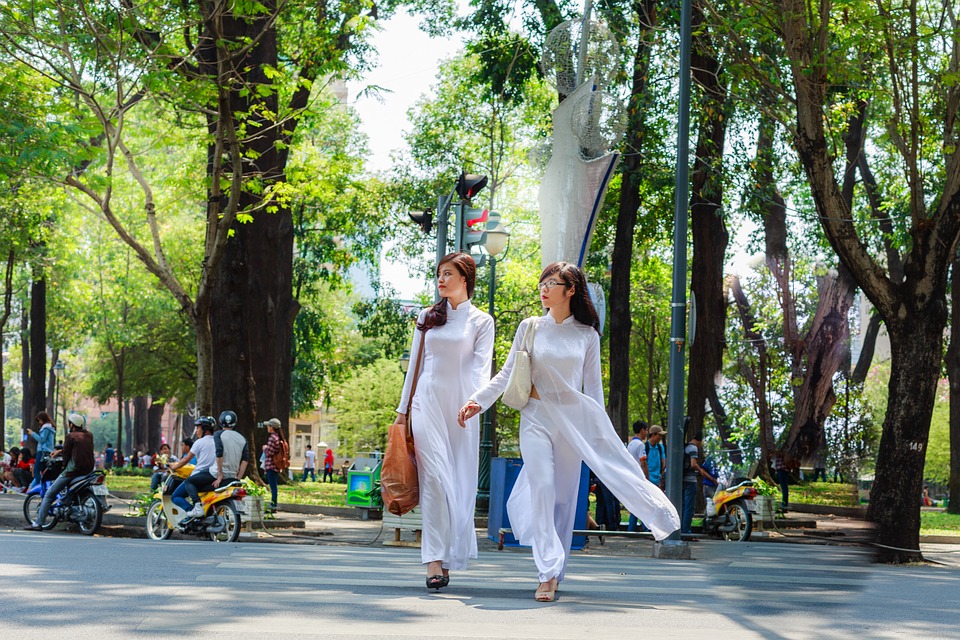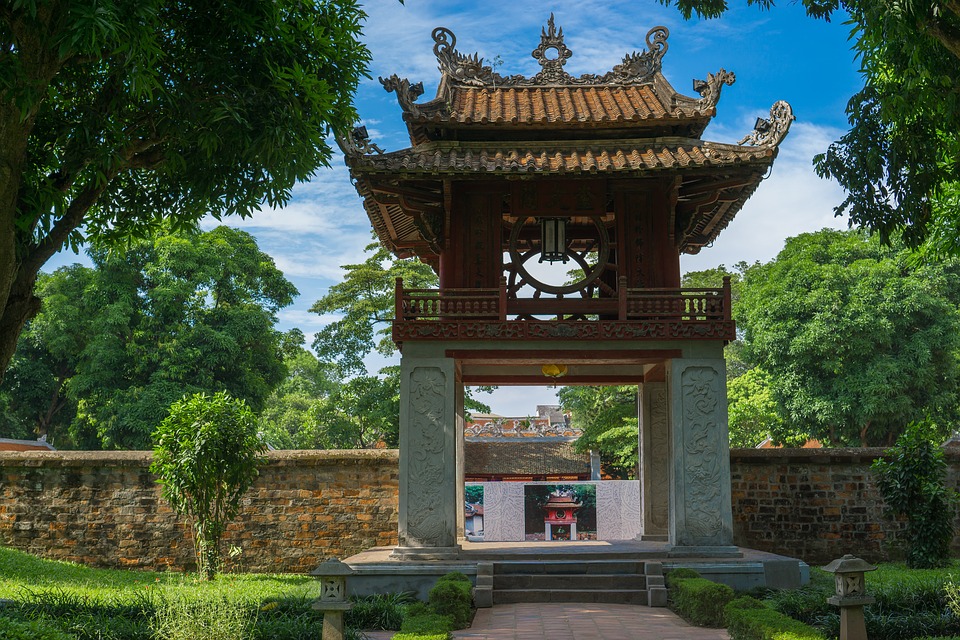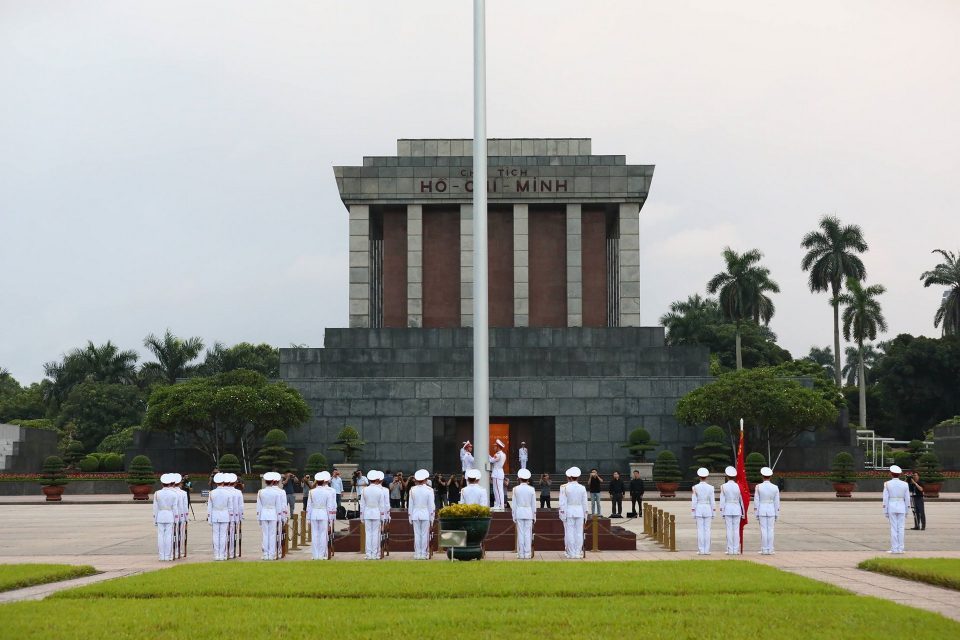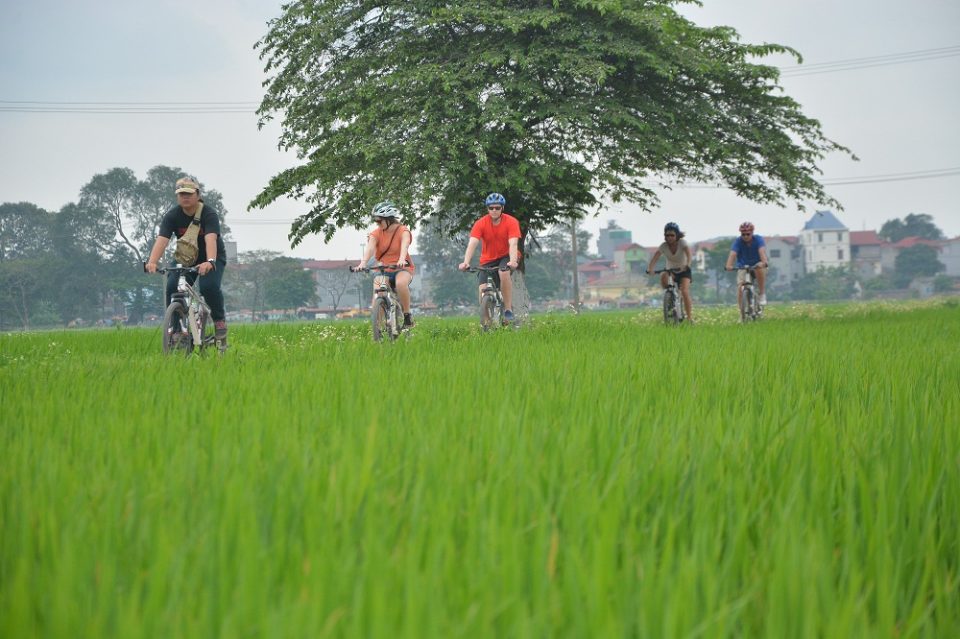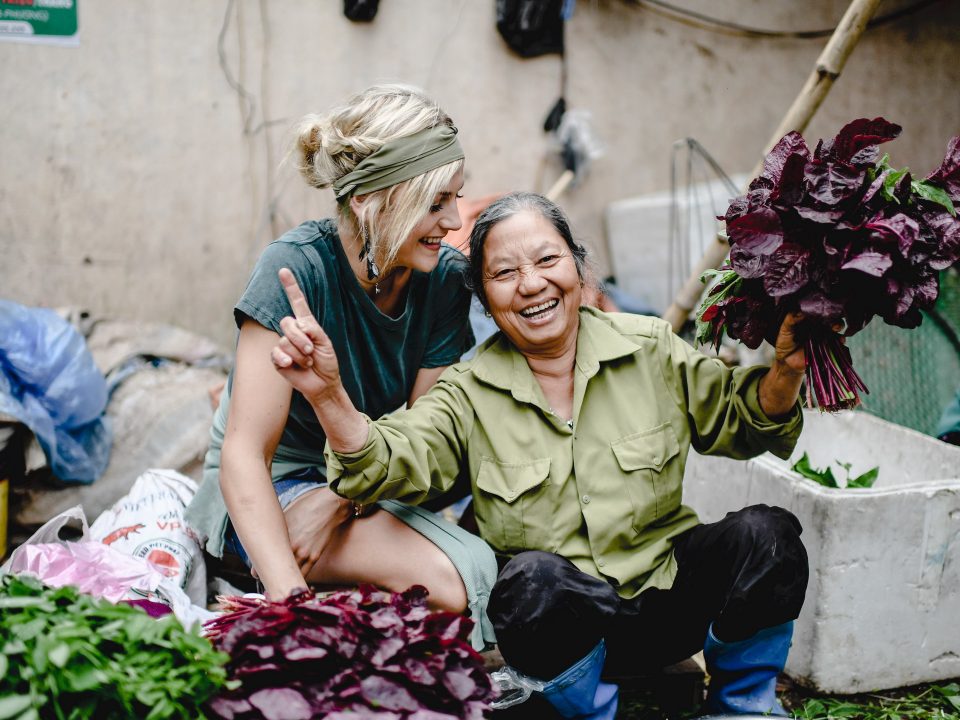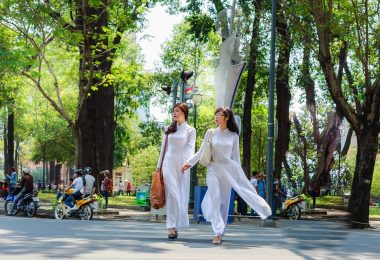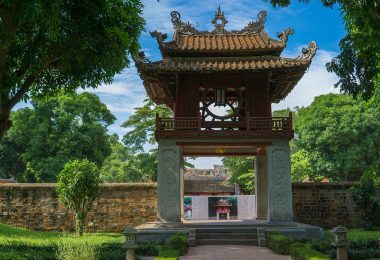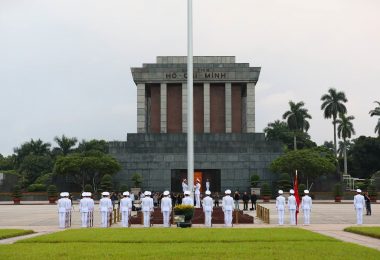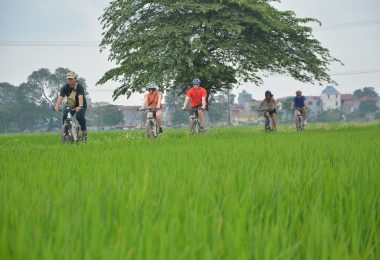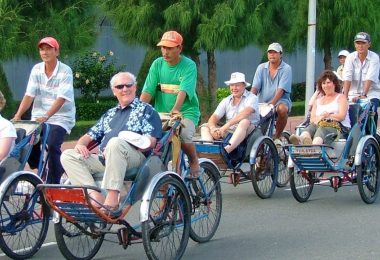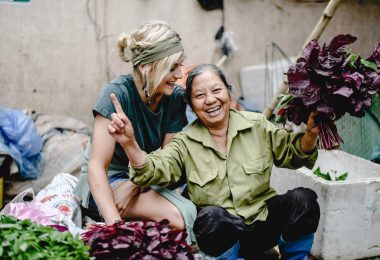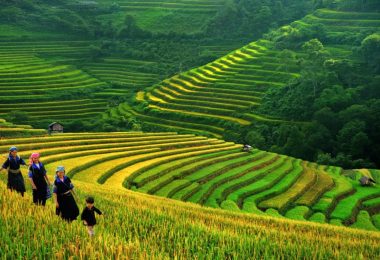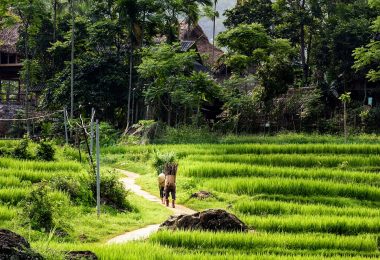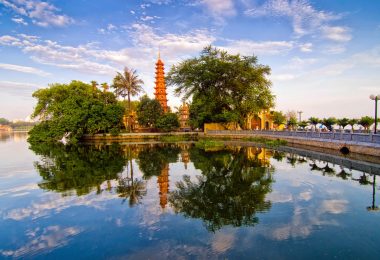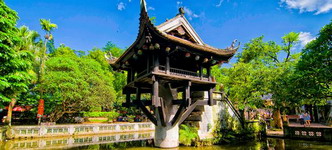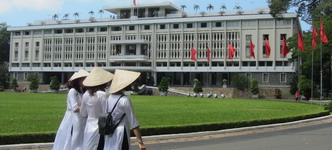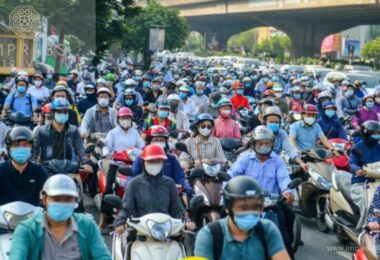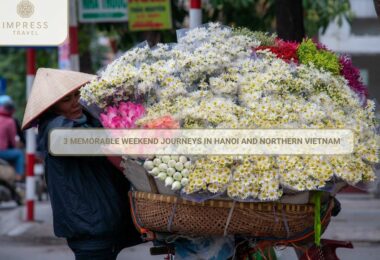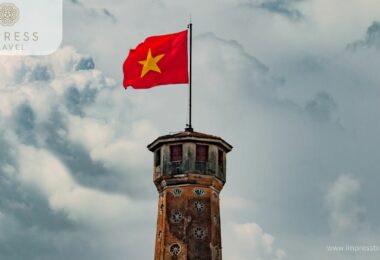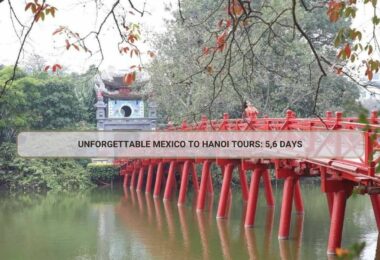The Long Bien flea market in Hanoi, considered one of the world’s top seven flea markets by Conde Nast Traveler, is well-known for its distinct appeal. Explore its vivid stalls, meet friendly sellers, and learn about the rich culture that makes this market unique. Join us on this wonderful journey!
Inside Long Bien Flea Market Abundant With Items

Long Bien Flea Market
The Long Bien flea market in Hanoi is a popular agricultural trade market. It sources its products fresh and straight from farms in the neighboring provinces of Bac Ninh, Ha Nam, and Phu Tho in the Mekong Delta. This direct supply also allows for the easy availability of a wide range of goods, including fresh food and seasonal products.
The Long Bien flea market in Hanoi sells fresh fruits and veggies year-round at an inexpensive price. Mangoes, plums, guavas, jackfruit, avocados, and watermelons are available throughout the summer. In the winter, oranges, bananas, and pomegranates are in season and quite inexpensive. Those looking to collect the greatest fruits, especially during the right season, should arrive early.
The Long Bien flea market entrance is separated into three areas. The center features a huge pavement for pedestrians, cars, and motorcycles. On either side of this path, there are lanes dedicated expressly for trucks to facilitate easy off-loading of goods at the market. Furthermore, this structure facilitates easy circulation among visitors and the distribution of goods around the market, making it convenient for everyone.
The Long Bien flea market in Hanoi is open daily from 10 p.m. to daybreak. The best time to buy and sell there is between 2 and 4 a.m. This time is ideal for those who wish to enjoy the colors of life with lamp lights at night, which contrast significantly from the quiet atmosphere at night.
Long Bien Flea Market in Hanoi: Tradition Amid Modernity
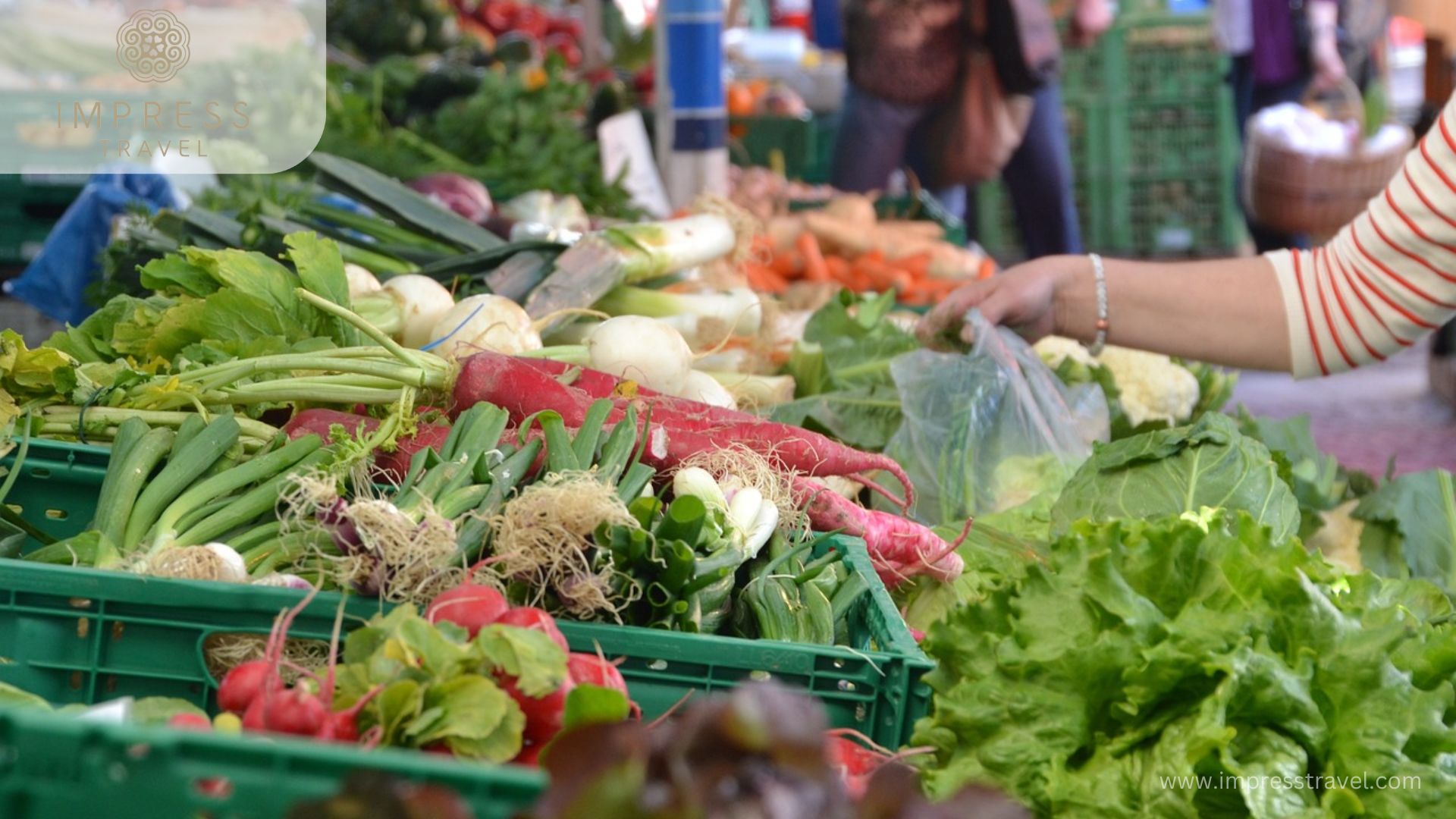
Buying vegetables
The Long Bien flea market in Hanoi, a representative of large-scale markets that dominated the world prior to the triumph of postindustrial commercialization, is still a true icon of tradition and keeps the market’s original character today. While many current marketplaces have identical, bland settings, it stands out for its entirely lovable experience and long tradition, as reported by credible platforms.
Despite the fact that Hanoi’s market structure has evolved significantly, the Long Bien flea market continues to reflect changes in market organization, corporate activity, and cultural frameworks. When it comes to endurance, it has stayed faithful to its primary principle, allowing visitors to enter a separate sphere of existence where age-old traditions are preserved despite the vibrancy of modern city life.
Embracing the Long Bien flea market is more than simply a shopping experience; it is a history lesson in Hanoi, with each stall and corner revealing a narrative of people’s survival and resilience. As global recognition rises, the essence of this venue as a cultural symbol and important part of the city’s history remains unchanged: warm and welcoming, inviting every visitor to experience the charm for which this market is known.
Why do Tourists Love Viewing Long Bien Flea Market from the Bridge?

Long Bien
Long Bien Bridge is an ideal location for viewing the Red River and learning about the city’s spirit. It is said to be over a century old and serves as a memory of Vietnam’s past, when modernism and tradition coexisted. Guests take deep breaths, absorb the seasonally vibrant scent of fruit near the Long Bien flea market, and become immersed in Vietnamese daily life. It is a more serene setting in which to unwind and contemplate on Hanoi’s history.
Long Bien Bridge transforms into a spectacular sight at night, with city lights reflected in the water. Visitors like taking a leisurely stroll here, absorbing in the beautiful atmosphere generated by the bridge’s brightness and the surrounding lights. It combines natural beauty with excellent design to connect Hanoi’s past, present, and future in a timeless way. Overlooking the Red River, with a panoramic view of the lively Long Bien flea market.
Long Bien Bridge is more than just a bridge; it is a charming representation of Hanoi that visitors can learn from. With its venerable structure and historical significance, the bridge enables tourists to appreciate Vietnam’s rich culture and timeless attractiveness. Located between modern and traditional architecture, guests can feel the calm of traditional Hanoi amidst the hustle and bustle.
Tourists can take stunning shots of the antique Long Bien Bridge’s old architectural aspects. Not only will the bridge be a stunning building, but the surrounding landscape will depict the people’s daily activities at the Long Bien flea market in Hanoi. For a photographer, the contrast between traditional aesthetics and modern living creates a rich narrative and a broad spectrum of images.
Deliciously Simple Cuisine at Long Bien Flea Market
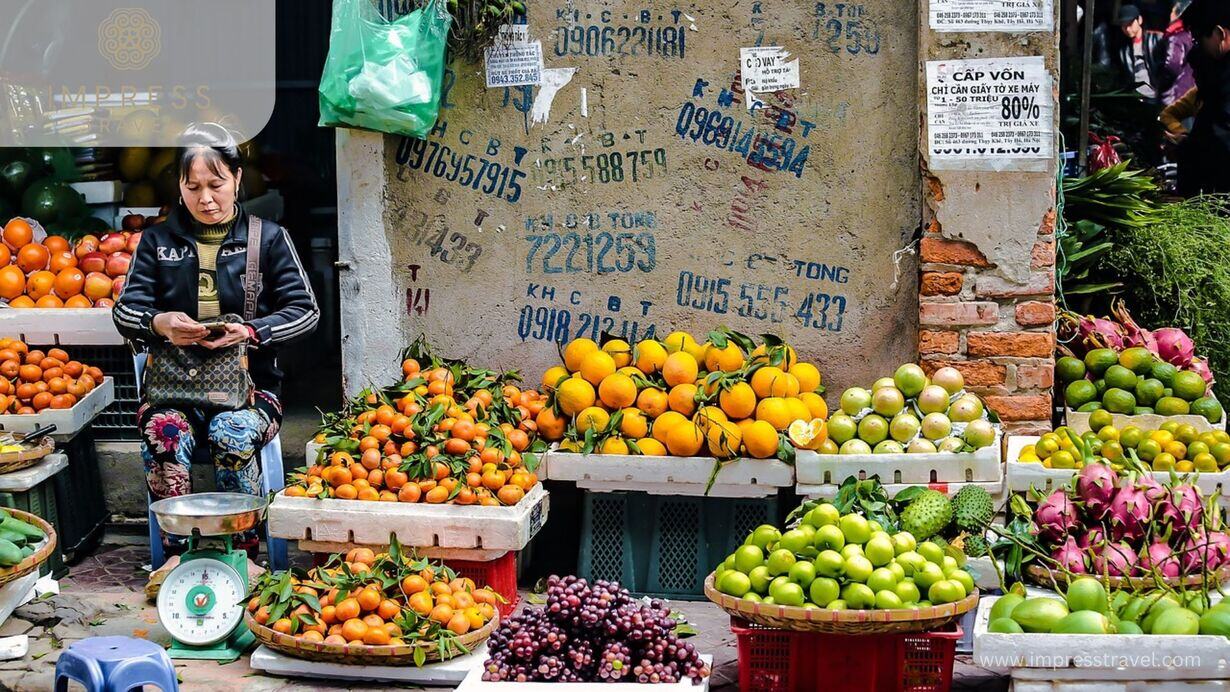
Selling fruits
The Long Bien flea market in Hanoi entices visitors with its bustling atmosphere and a plethora of culinary options, with each food booth serving as a gateway to discovering Vietnam’s unique flavors. The market not only whets the hunger but also tells stories of meticulous preparation and local specialties. The bustling ambiance of the market transforms it into a one-of-a-kind must-see destination for anyone looking to sample authentic Vietnamese cuisine.
It not only serves a broad menu, but it also caters to both locals and foreigners. As previously stated, food stalls do not attract attention by their look, but the flavor and scent of the food provide a diverse and tasty selection. The portions are large, and the prices are reasonable, allowing many clients to eat well while staying on budget. The Long Bien flea market in Hanoi is well-known for showcasing the country’s culinary culture. Anyone can sit down and enjoy the delicious meals in the lively setting.
The crab noodle soup (banh da cua) and mixed glass noodles (mien tron) are two of the most popular meals, and they cost between 15,000 and 50,000 VND per plate. These foods not only serve the goal of eating, but they also provide insight into Hanoi’s culture and hospitality. Whether exploring late into the night or simply looking for a quick supper, the Long Bien flea market in Hanoi remains a popular destination for foodies looking to immerse themselves in the tastes that define Vietnamese street food at its best.
Affordable Hotel Accommodation Near Long Bien Flea Market
The Long Bien flea market in Hanoi is a fantastic site for tourists to visit, and there are numerous wonderful hotels nearby. Impress Travel allows you to explore some hotels around this market and choose the ideal location to stay.
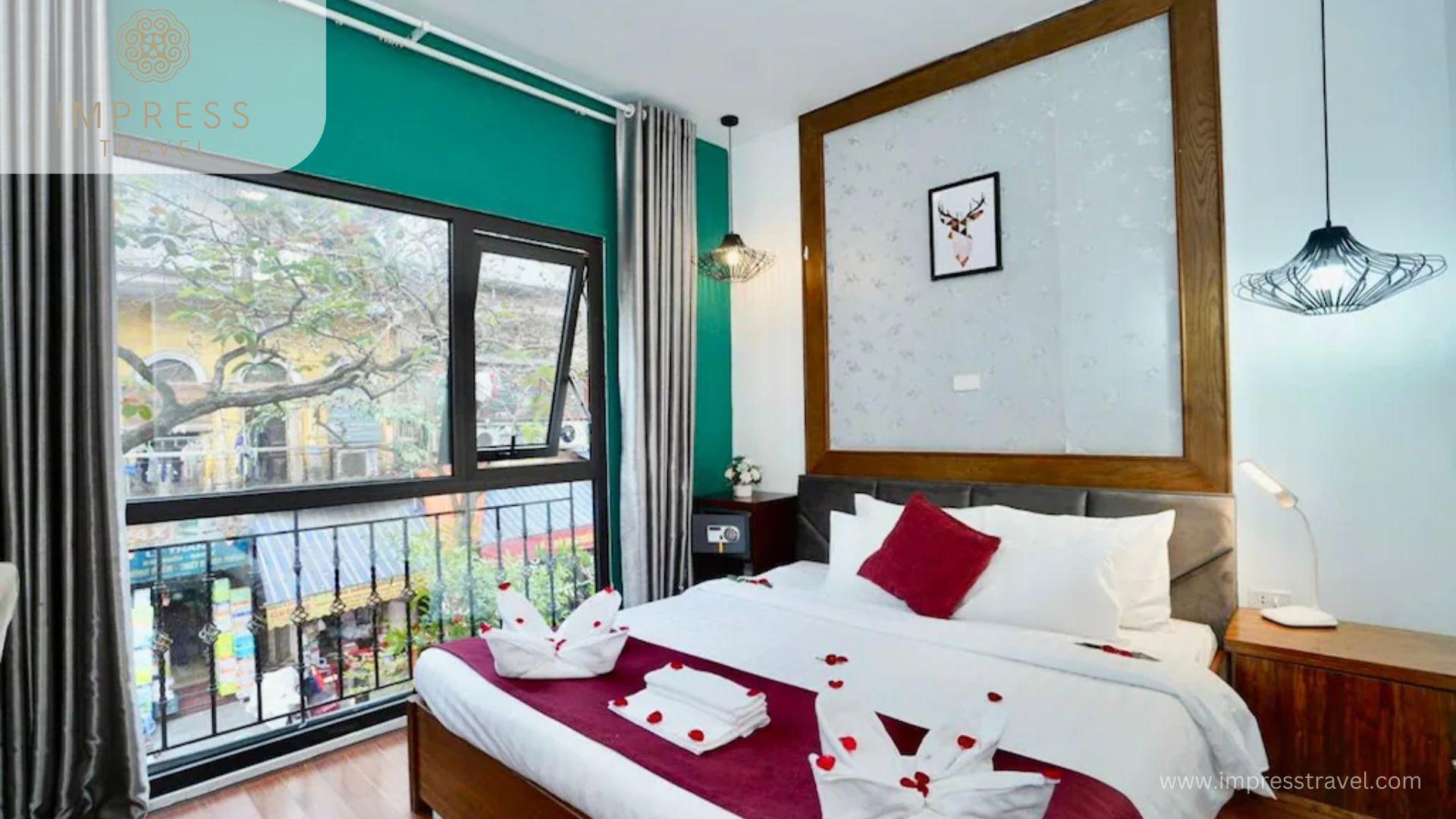
NT Elysian Hotel
- Address: 13 Hang Chieu Street. O Quan Chuong Dong Xuan, Hoan Kiem District., Old Quarter, Hanoi, Vietnam
- Room rates: $24 – $34 (Based on Average Rates for a Standard Room)
The rooms at NT Elysian Hotel are imbued with traditional colors through classic decor, with most of the furniture made from exquisitely carved wood. Not only is the interior decor meticulous, but the rooms at NT Elysian Hotel are also very spacious, promising guests a memorable experience when they visit.
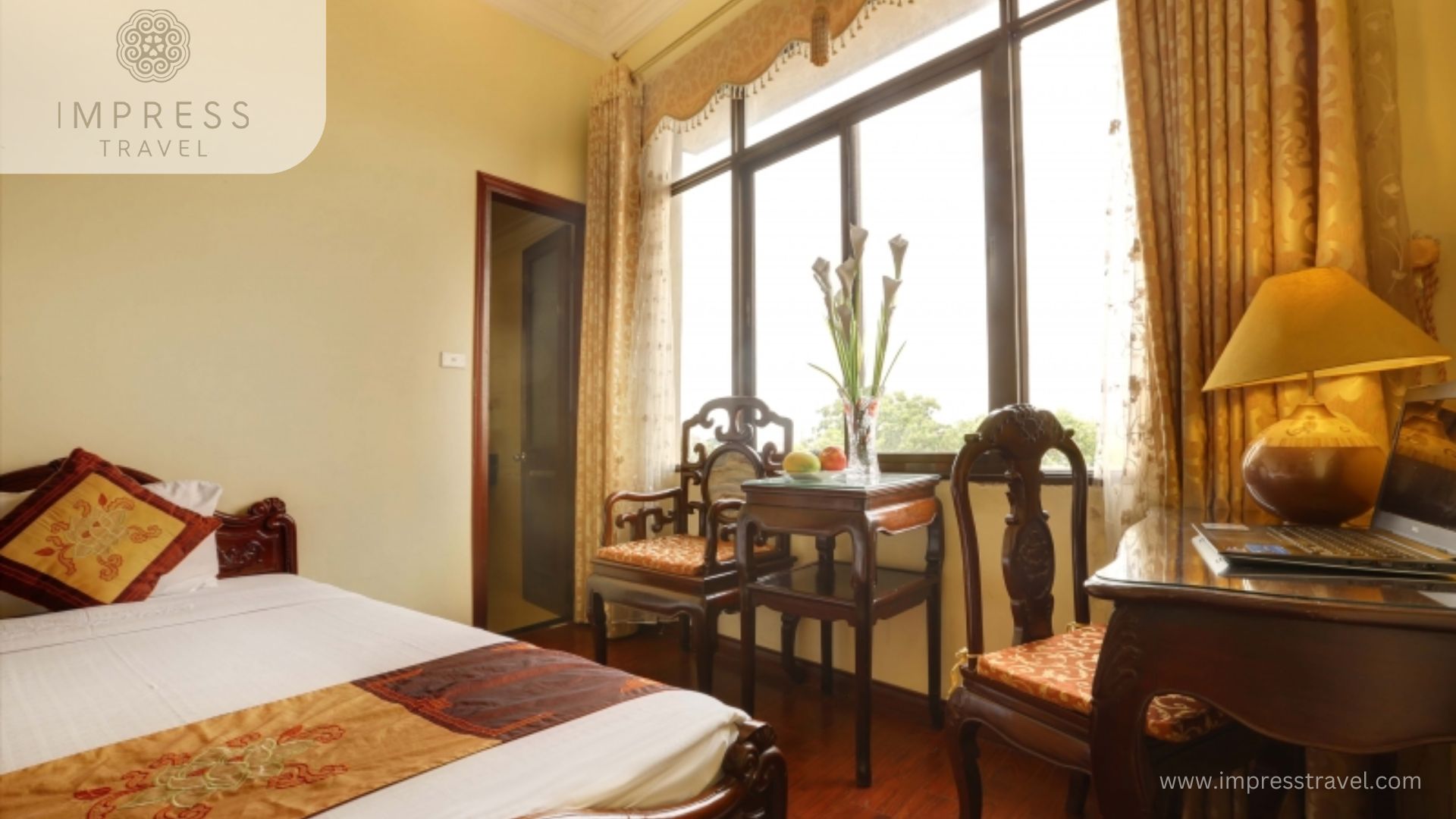
Hanoi Little Town Hotel
- Address: 77 Hang Luoc, Hoan Kiem, Hanoi
- Room rates: $28 – $45 (Based on Average Rates for a Standard Room)
Hanoi Little Town Hotel features a decor style with an antique touch, showcasing intricately carved wooden chairs and a main theme of gentle tones, adding elegance to the rooms. Moreover, the quiet and private atmosphere at Hanoi Little Town Hotel is another reason why many guests choose this place whenever they visit Hanoi.

The Hanoian Hotel
- Address: 42 Hang Cot Street, Hoan Kiem District, Ha Noi
- Room rates: $46 – $74 (Based on Average Rates for a Standard Room)
The abundance of natural light and white tones that dominate the layout of The Hanoian Hotel in general contribute to a more refined and attractive substitute for the vacant space throughout the area. It offers a variety of options for guests to choose from, including city view rooms with large windows overlooking Hanoi’s ever-busy streets.
We reviewed a few hotel recommendations near the Long Bien flea market in Hanoi that have gotten great reviews from recent visitors. Hopefully, these suggestions will help you find accommodations that meet your needs.
In conclusion
The Long Bien flea market in Hanoi comes alive every day at 10 P.M., whether it is summer or rainy season. While they only trade retail during the day, hundreds of trucks follow them at night, carrying loads of veggies and fruits for the city’s requirements. When the trucks come, porters and vendors make loud noises, bringing the market to life. Furthermore, as the night wears on, the market becomes increasingly congested.
Despite the rush and bustle at 10 P.M., most activity at the Long Bien flea market in Hanoi has subsided between 4-5 A.M., suggesting that the market is ready to open in the morning. After more than two decades of performances, Hanoi residents have grown accustomed to seeing this concert. It remains one of the most interesting and intriguing marketplaces in the world today, thanks to its distinct nightly cycle and critical role in the city’s food supply.
Don’t forget to regularly follow our Facebook page and Website for more interesting information about traveling to Hanoi and to book Hanoi tours at the best prices.







































